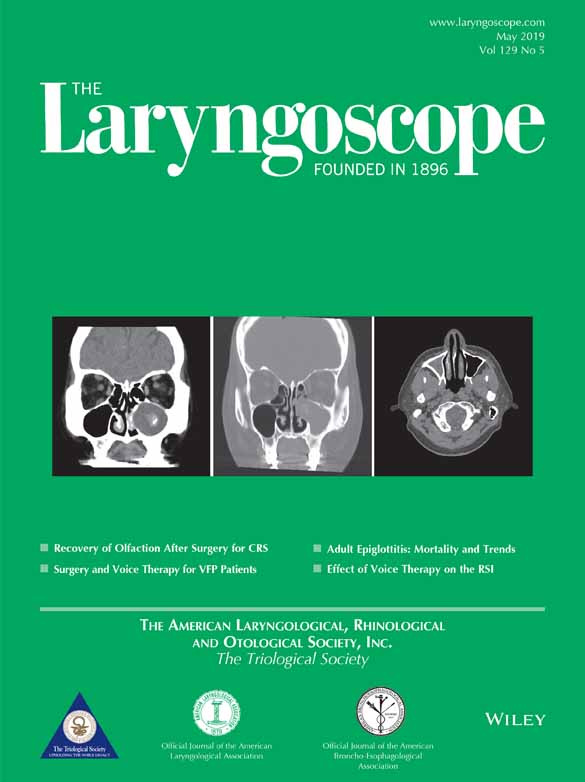Changing trends in management of vestibular schwannoma: A National Cancer Database study
Presented at The Triological Society Annual Meeting in National Harbor, Maryland, U.S.A., on April 20, 2018.
The authors have no funding, financial relationships, or conflicts of interest to disclose.
Abstract
Objective
To describe changes in management trends of vestibular schwannoma (VS) and the effects of median income, education level, insurance status, and tumor size on receipt of treatment.
Methods
Cross-sectional analysis using the National Cancer Database from 2004 to 2014. All patients with a diagnosis of VS were identified between 2004 and 2014. Trends in treatment modality over time were analyzed. Correlation between demographics, institution type, median income, education level, and insurance status were assessed using univariate and multivariate logistic regressions.
Results
Of the 22,290 VS patients identified, 16,011 (71.8%) received treatment, whereas 6,279 (28.2%) received observation. Management trend analysis over the 11-year period revealed patients with tumor size < 1 cm are more frequently observed (34.6% of cases in 2004 vs. 60.8% of cases in 2014) and less frequently received surgery (34.6% vs. 16.8%). Multivariate analysis showed observation was more frequently used in patients ≥ 65 years; black patients; and those on Medicaid, Medicare, and noninsured (P < 0.0001). All tumors > 2 cm were more likely to be treated with surgery, specifically subtotal resections (P < 0.0001). Patients treated at nonacademic centers were more likely to receive linear accelerator, or LINAC (Accuray Incorporated, Sunnyvale, CA) therapy than Gamma Knife (Elekta, Stockholm, Sweden) (P < 0.0001).
Conclusion
Management of VS is shifting toward increased observation, most significantly in tumors size < 1 cm. Insurance provider plays a significant role on receipt of treatment and modality, whereas income and education do not.
Level of Evidence
NA Laryngoscope, 129:1197–1205, 2019




